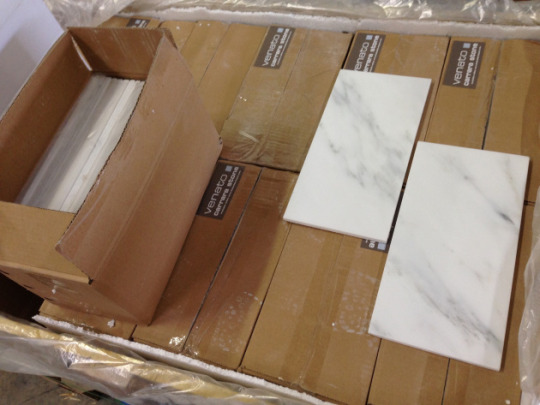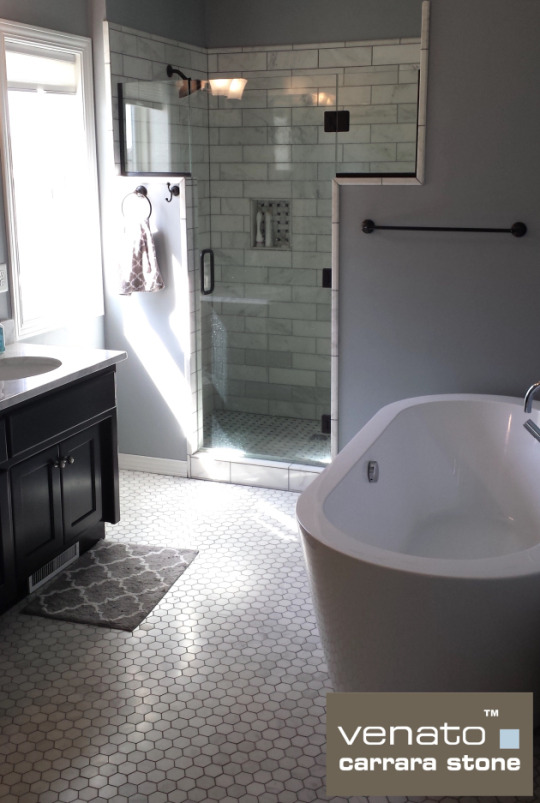Go to a retail store and you’ll
probably end up paying $50 for a square foot of high-end Italian tile—and up to $90 per square
foot of mosaic. David Shearn, the CEO of The Builder Depot will sell you that same
tile for $5; the mosaic will run a mere $13.95.
The
only trouble is no one believes his prices.
Too Good to Be True?
“The number one
question our customers asked us when we started in 2008 is the same question we
get in 2016: ‘How can your prices be so cheap?’ People think if it sounds too
good to be true it probably is. But it isn’t! We pay our suppliers cash, and
cut out most of the steps in the traditional supply chain to save money at each
step—which allows us to deliver really low prices to our customers on high-end
tiles. It all comes down to understanding how the supply chain works, how a
product comes from point A and reaches the consumer at point B.”

Customers appear to have overcome
their skepticism, though, because Builder Depot’s sales revenues are in eight
figures and rising. The company is already the biggest tile site on the web,
with the largest stock and over 2000 SKUs. And construction has started on a
new, five-acre fulfillment facility, with 15 loading docks, in Alpharetta,
Georgia on the outskirts of Atlanta.
Shearn considered many factors before he chose
Alpharetta—a bedroom community just outside Atlanta. “There are too many
people on the roads already,” he laughs. “It’s no good for anyone. I
hate seeing people who have driven two or three hours in traffic to get to work.
They come in exhausted. How can that be good for business? So I put our
new facility in a beautiful area with the best schools in Georgia, where people
can live nearby and skip the commute. It’s an area you would want to have your
family come and have lunch with you. I need happy employees.”
Opportunity Knocks—and Cash
Is King
Shearn
is a highly-knowledgeable business person, with a degree in business and a
penchant for hard work to go with it. His success story doesn’t make it sound
easy, though. In fact, it makes it sound hard.
After
he graduated from university in 1997 Shearn went to work for a massive
manufacturer, where he spent two years visiting the company’s various
conglomerates. He spent three months at each one, starting at the bottom and
working up to where he could shadow the CEO. Then he’d have to suggest how he
would improve the business. As he explains, “It was like doing an unofficial
MBA.”
Shearn
ended up as head of US operations for a large UK manufacturer specializing in glass
and tile imports. Then, suddenly, thanks to the crash of ’08, the company
collapsed and he found himself unemployed. His company had been forced into debt
in order to make payment terms. This model works, he points out, only as long
as sales continue. 2008 hit the building industry hard, and lots of companies
went under. Shearn swore that in future he’d do business in cash. He had a
family to support. He saw that business was cyclical; any business he started
had to be able to survive a downturn.
Then
he saw an opportunity. “During my time selling tiles I had noticed a few
weaknesses in the industry,” he notes. “These companies had huge,
expensive supply chains. Nobody was using the internet. Something had to
change.” Shearn had already taught himself how to build and run an
ecommerce site. Now, in 2008, he thought it was time to start one of his own.
“I
wanted no debt,” he explains, “so I sold my 401K, which was
considerable, and tried to open a business bank account. I didn’t want a loan,
just an account! Three banks turned me down. Finally I found one bank that
would give me an account, and I started buying tile. For cash. At the time cash
was something people wanted badly. I wanted to break the traditional pricing
structure. I would buy for cash, use my ecommerce skills, collapse the supply
chain, and sell high-quality merchandise at a price no one else could
match.”
Don’t Answer the Phone
At
first a lot of people didn’t believe Shearn’s prices. “We created videos
to explain how we do it,” he laughs. “Whiteboard presentations. We
explained it on the web site. But it still upset everybody. The traditional
model is quarry to distributor to sub-distributor to retailer to contractor to
consumer—and at every point in that supply chain prices go up. But if you go
direct to the quarry at a point when they need cash, you say, ‘Look, this is
the weakest part of the year for you. You’ve got to pay your people, you’re not
going to get any new orders, and you need long runs. So we’ll give you long
runs, and we’ll give you cash. All you need to do is provide the absolute best
product at the lowest price. And we’ll do it again very soon.’”
One
year later Builder Depot was in the black. But if the business model was easy,
the fulfillment process wasn’t.
“The
biggest challenge when we were starting was doin’ it all myself,” Shearn
recalls. “Literally. I would unload a 24-foot truck with a pallet jack,
with pallets weighing over 2000 pounds. Then I’d have to pack seven or eight
orders. I got a torn shoulder, and I was trying to use my left hand as much as
I could. My wife would be packing the samples. We didn’t have the resources to
pay someone to answer the phone, so we never answered it. I lost a lot of
weight. It was my personal gym. Our garage was our first warehouse. The
shipping dock was the front of our house. And we couldn’t spend any money at
all. It isn’t for everyone.”
Shearn
went through several internet platforms before settling on Yahoo Small Business. “I
started out with Amazon,” he says, “because they gave me more HTML
options, and I tried EBay, ’cause that’s the typical way to do things. But they
both wanted between 10 and 30 percent commission. It was just adding to the cost
of the product. So I decided to give Yahoo a go. Yahoo only charges 0.75 percent, so it’s a no-brainer! My first site was pathetic, just some online products and me trying to
get it going. But our new site is terrific, thanks to a designer Yahoo found
for us. I’ve been very pleased with Yahoo.”

Google Trusted Store
Indeed,
the internet business just got a lot better for Builder Depot.
Recently, for the third year in a row, 35 million
monthly users at Houzz.com
cited Builder Depot as Best in Customer Service. And on January 1, 2016, Builder
Depot was declared
a Google Trusted Store.
What
does that mean, actually?
“I
don’t know yet,” says Shearn. “They just told us a week ago. You have
to have incredible customer ratings. We’ve got 4.9 stars out of five. Then you can
put the Google Trusted Store logo on your site, and Google guarantees your
buyers $1000 against any purchase liability. They claim it can mean growth of
four to five percent in sales. Maybe you place higher in search results too.
And by 2018 or 2020 if you’re not a Google
Trusted Store you’ll probably find yourself on page 7000 of the search results.
But I’m just guessing.”
Shearn
certainly isn’t guessing about how to build a successful ecommerce site. “I’ve
built up quite a few skills over the years,” he admits. “I didn’t
just stumble into this.”
- Author Michael Goodwin
- Type article
- Image https://68.media.tumblr.com/1e6dba4a064cddc042b6f1f39483385f/tumblr_inline_o5n3fjV8QK1sbcn66_540.jpg
- Provider Yahoo Small Business Advisor




